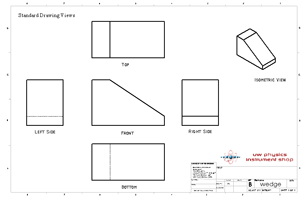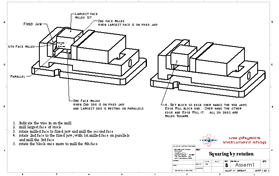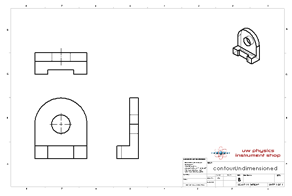The following are PDF files

Standard Drawing Views

How to Square up stock

How to dimension a drawing ,you try
solution here
Cutting Speed and Feeds
Some considerations to your choices:
- rigid set up
- is your part secure? no-take lighter cuts
- is your tool as short as possible to do the job? no-use a lower speed
- is the machine rigid? no-use a lower speed and feed
- is your tool sharp? no-reduce your speed and feed or get a new cutter
- does your material work harden? start in the middle of the range
- chip formation & chip evacuation
- inner voice-self preservation-if you are not comfortable with the caculated speed and feed, start off on the lower end of the range
Simplified Speeds and Feeds
S= (CS x 4) ÷ D
S= Speed (revolutions per minute) - how fast you spin the part or tool
CS = Cutting Speed of the material (surface feet per minute)
D = Diameter of the rotating tool or part (inches)
CS for typical materials using high speed cutting tools, for carbide tools increase the CS by 1½ -3 times
Aluminum 200-300
Brass 100-200
Copper 60-80
Plastic 200 varies greatly, depending on the type of plastic
Steel 80-100
Stainless Steel 40-50
FR=Feed Rate (inches per minute) - how fast you cut across the part
FR=CS x # of teeth in tool x chip load
Rule of Thumb
Increase the Feed Rate or Decrease the Speed to remove chatter
For example:
Cutting Aluminum block with a ½” ø high speed end mill with 2 flutes
S = (300 x 4 ) ÷ .5 = 2400 RPM
FR = 2400 x 2 x .001 = 4.8 ipm
this is a good place to start
